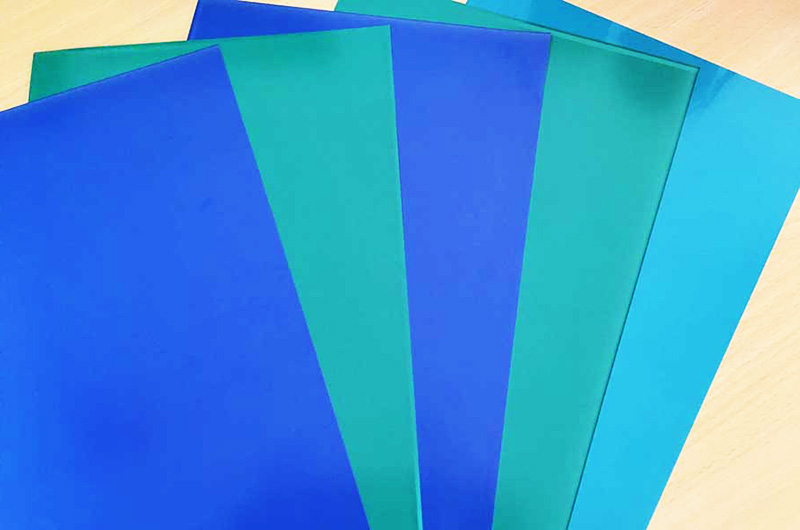Mar. 06, 2025
The quality indicators of aluminum substrates for CTP and PS can be divided into explicit indicators and implicit indicators.
The quantitative indicators of aluminum substrates used for CTP and PS mainly include the chemical composition of the aluminum substrate, shape and dimensional accuracy, mechanical properties at room temperature, unevenness and surface roughness, etc.
Compared with the PS version, the CTP version has rationalized engineering operations, saved manpower, shortened plate making time, and improved labor productivity.
It has the advantages of improving the quality of printed matter and meeting the needs of the continuously improving people's living standards, so the application of CTP plates has developed rapidly.

At present, the alloys used in CTP plates are mainly 1050, 1060, and 1070, which are consistent with the alloy grades used for aluminum substrates in PS plates.
Chemical composition of 1050 aluminum substrate for CTP PS
| Element | Composition (%) |
| Aluminum (Al) | 99.50 min |
| Silicon (Si) | 0.25 max |
| Iron (Fe) | 0.40 max |
| Copper (Cu) | 0.05 max |
| Manganese (Mn) | 0.05 max |
| Magnesium (Mg) | 0.05 max |
| Zinc (Zn) | 0.05 max |
| Titanium (Ti) | 0.03 max |
| Other elements (each) | 0.03 max |
| Other elements (total) | 0.10 max |
Although there is little difference in the chemical composition requirements of the aluminum substrate between CTP and PS versions, the electrolytic grit of CTP requires a finer and more uniform distribution, so the distribution of added elements in the aluminum body is required to be more uniform. Some people have proposed that CTP needs to be The aluminum base material is used as a square ingot for hot rolling or a billet for cold rolling for homogenization heat treatment.
Whether it is a CTP version or a PS version, its mechanical performance requirements are not difficult to achieve for aluminum processing, and there will be no problem for applications with low print runs.
| Product | 1050 H16 | 1050 H18 |
| Tensile Strength | 135-165 | 155-185 |
| Elongation at Break | ≥2 | ≥1 |
Some CTP and PS plates have been pre-heated or intermediately heat-treated with aluminum substrates. In terms of normal temperature mechanical performance indicators, the tensile strength of the 1050 aluminum substrates that have been preliminarily or intermediately heat-treated has decreased, while the elongation has increased.
CTP is the abbreviation of computer to print. This name also vividly reflects the characteristics of digital printing. It is precisely because of the characteristics of the light source and equipment used in digital plate making that it has excellent shape and dimensional accuracy, unevenness and surface roughness indicators. The requirements are more stringent than PS.
| Indicators | Unit | Aluminum Base Material for CTP | Aluminum Base Material for PS | |
| Thickness Deviation | ㎜ | 0.27±0.005 | 0.27±0.01 | |
| Roughness | Ra | ㎛ | 0.10-0.25 | 0.22-0.28 |
| Rz | 0.6-1.4 | 1.0-1.8 | ||
| Flatness | Wave Height | ㎜ | 2 | 3 |
| Number of Waves | Pieces | 3/m | 3/m | |
| Waviness | Height | ㎜ | 1 | 1.5 |
| Quantity | Pieces | 3/m | 3/m | |
Differences in conceptual index requirements for aluminum substrates used in CTP and PS. Conceptual indexes refer to the fact that they can generally only be described in words.
The quality indicators that cannot be digitized mainly refer to the surface defect requirements of aluminum substrates. The difference between CTP and PS in surface defect control requirements is mainly reflected in the severity of defect requirements. No matter what printing purpose the printing plate is used for, CTP has stricter requirements for surface defects on aluminum substrates than PS. CTP uses aluminum substrates. The surface defects of aluminum substrates need to be smaller in size, shallower in depth and lighter in severity. Internationally renowned brands such as Fujifilm and Agfa require almost zero defects in the surface quality of aluminum substrates.
CTP and PS have the same requirements for the surface quality of the aluminum substrates used. They both hope that the fewer surface defects, the better, and the lighter the better. In the actual production process of aluminum substrates, it needs to go through dozens of processes such as smelting, casting, machining, heat treatment, hot rolling, hot finishing rolling, cold rolling, finishing, etc. The length of each roll can be up to nearly 10,000 meters. As long as it is thousands of meters long, most coiled materials often have some surface defects, either light or heavy. The economically feasible way is to formulate targeted control requirements for surface defects.
Users viewing this material also viewed the following
Further reading: ctp platectp machinectp plate making machinecomputer to plate machinecomputer to platecomputer to plate ctpctcp platectp plates for offset printingctp printingcomputer to plate printingcomputer to plate systemsctcp plate making machinectcp printing platesctp computerctp computer to platectp computer to plate machinectp machine for printingctp offset machinectp offset printingctp offset printing platesctp plate machinectp printing platectp thermalctp thermal plateoffset ctpoffset printing ctp plateoffset printing plate making machineplate ctpplatesetter printingsmall ctp machinethermal ctpthermal ctp machinethermal ctp systems